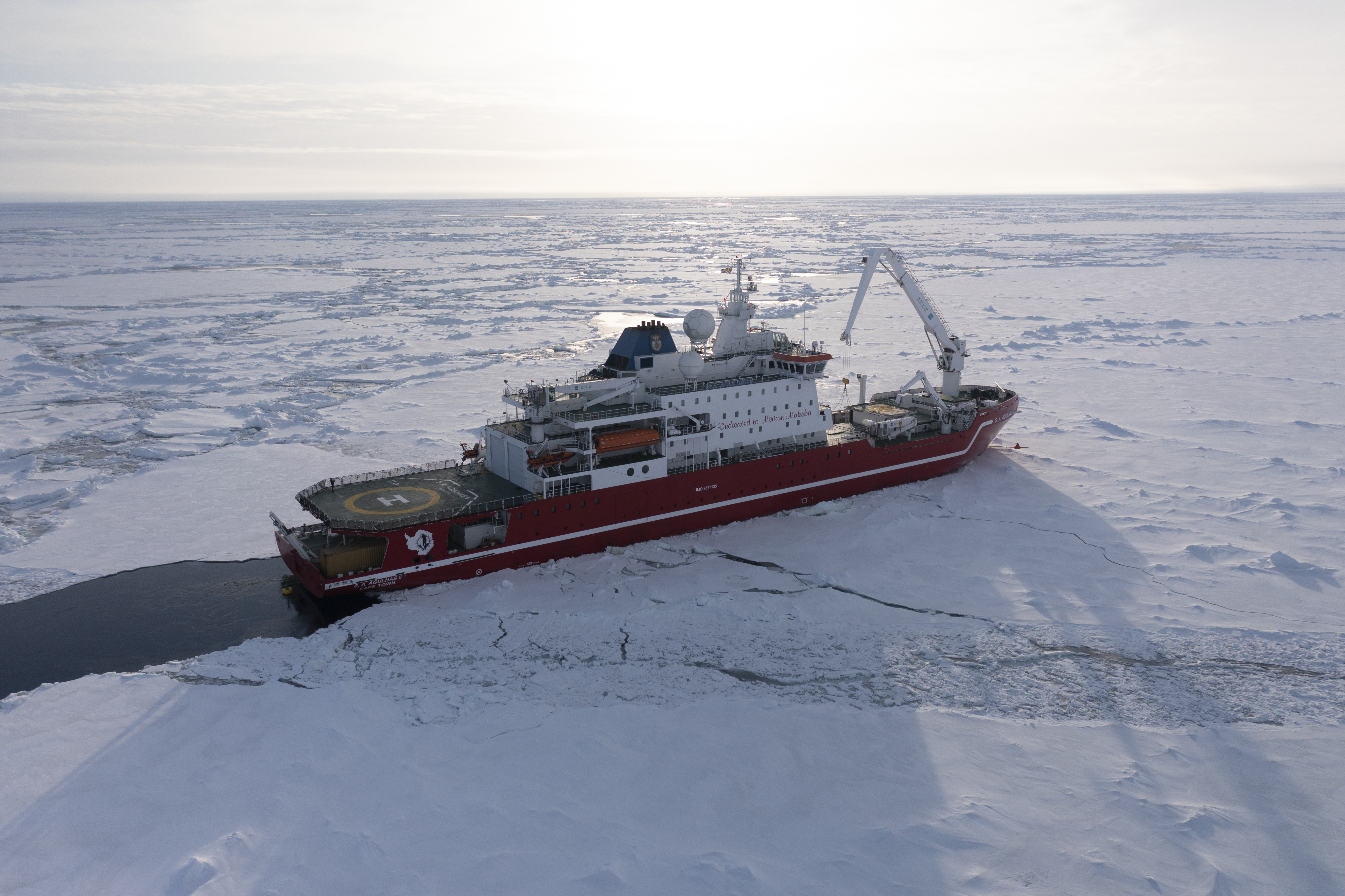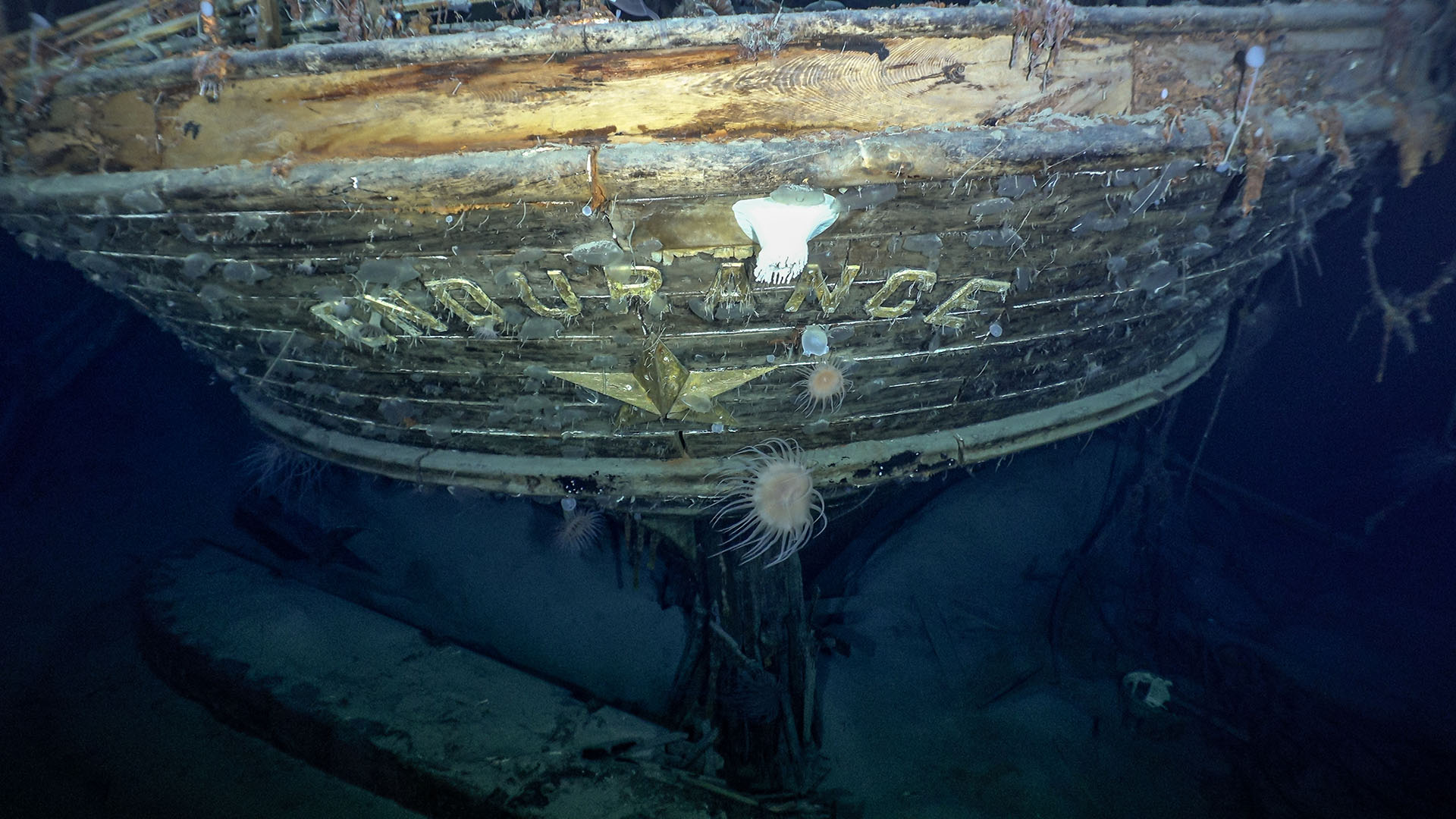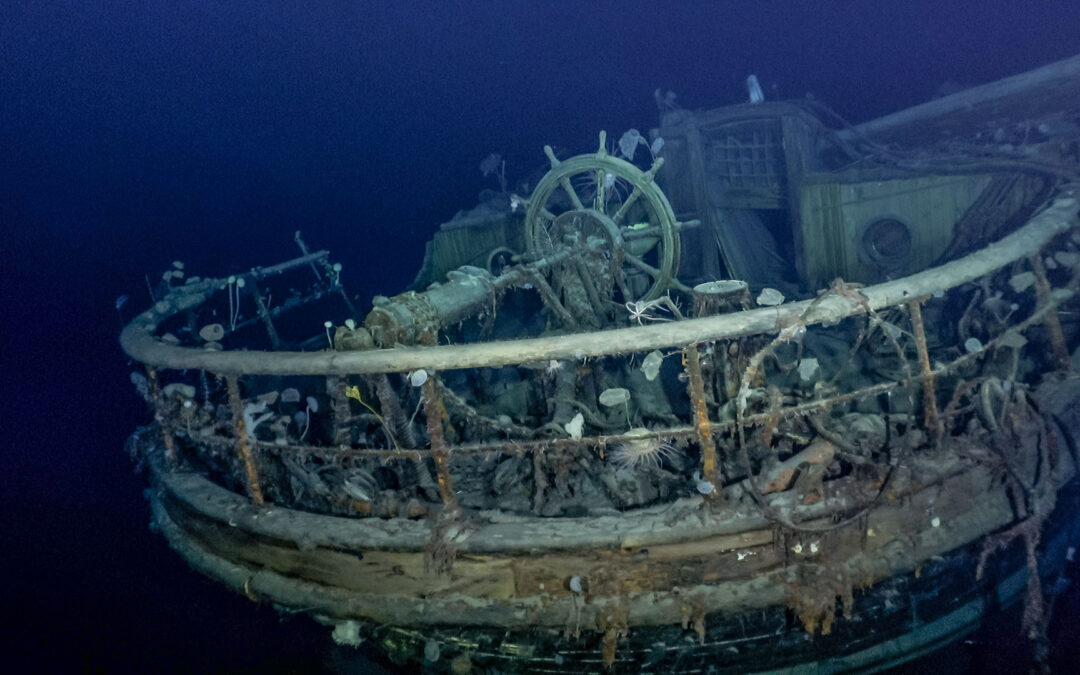The Falklands Maritime Heritage Trust’s Endurance22 Expedition has located the wreck of Endurance, Sir Ernest Shackleton’s ship, using an autonomous underwater vehicle (AUV). The ship had not been seen since it was crushed by the ice and sank in the Weddell Sea near Antarctica in 1915.
One hundred years after Shackleton’s death, Endurance was found at a depth of 3008 metres in the Weddell Sea, within the search area defined by the expedition team before its departure from Cape Town, and approximately four miles south of the position originally recorded by Captain Worsley.
The team worked from the South African polar research and logistics vessel, S.A. Agulhas II, owned by the Department of Forestry, Fisheries and Environment and under master, capt. Knowledge Bengu, using Saab’s Sabertooth hybrid underwater search vehicles (AUVs). The wreck is protected as a Historic Site and Monument under the Antarctic Treaty, ensuring that whilst the wreck is being surveyed and filmed, it will not be touched or disturbed in any way.
Watch a video with footage shot by a AUV at the bottom of this post.

‘Our objectives for Endurance22 were to locate, survey and film the wreck, but also to conduct important scientific research, and to run an exceptional outreach programme,’ says Donald Lamont, Chairman of the Falklands Maritime Heritage Trust.
Mensun Bound, Director of Exploration on the expedition, adds: ‘This is by far the finest wooden shipwreck I have ever seen. It is upright, well proud of the seabed, intact, and in a brilliant state of preservation. You can even see “Endurance” arced across the stern, directly below the taffrail. This is a milestone in polar history.’
Also read: Bridge Maritime locates Smit-Lloyd 102, which sank near South Africa in 1970
Subsea technologies
‘This has been the most complex subsea project ever undertaken, with several world records achieved to ensure the safe detection of Endurance,’ states Nico Vincent, Subsea Project Manager.
He adds: ‘State of the art subsea technologies have been deployed to achieve this successful outcome and I would particularly like to thank the subsea team for all of the engineering support, both on board the ship and throughout the months of planning, design and testing. All of them showed a huge commitment and resilience, worthy of the finest tradition of polar exploration. Saab provided the Sabertooth so I also want to thank them, including their ace team on board S.A. Agulhas II, and those who ensured the vehicles performed as well as they did.’

Shackleton’s expedition with the Endurance
It was Sir Ernest Shackleton’s ambition to achieve the first land crossing of Antarctica from the Weddell Sea via the South Pole to the Ross Sea. The Ross Sea Party, which was landed at Hut Point on Ross Island, had the task of laying supply dumps for Shackleton’s crossing party, and achieved its objective, but at the cost of three lives lost.
In the Weddell Sea, Endurance never reached land and became trapped in the dense pack ice and the 28 men on board eventually had no choice, but to abandon ship. After months spent in makeshift camps on the ice floes drifting northwards, the party took to the lifeboats to reach the inhospitable, uninhabited, Elephant Island.

Shackleton and five others then made an extraordinary 800-mile (1300 km) open-boat journey in the lifeboat, James Caird, to reach South Georgia. Shackleton and two others then crossed the mountainous island to the whaling station at Stromness. From there, Shackleton was eventually able to mount a rescue of the men waiting on Elephant Island and bring them home without loss of life.
Scientific research into climate change
Under the leadership of Dr Lasse Rabenstein, Endurance22’s Chief Scientist, a world leading team of scientists from research and educational institutions successfully conducted hundreds of hours of climate change related studies over the duration of the expedition.
Representatives from the South African Weather Service, German firm Drift & Noise, Germany’s Alfred-Wegener-Institute, German Aerospace Center (DLR), Aalto University in Finland and South Africa’s Stellenbosch University researched the ice drifts, weather conditions of the Weddell Sea, studies of sea ice thickness, and were able to map the sea ice from space. Combined, these important studies will materially help our understanding of this remote region and how it influences our changing climate.

Expedition coverage and exclusive documentary
History Hit, the content platform co-founded by historian Dan Snow, digital content agency and media network Little Dot Studios, and production company Consequential, have produced a range of content covering the setting up of the expedition, the voyage and search, and now the discovery itself, as well as the history, science, and other themes that connect to the wider mission. Short-form content continues to be distributed to millions of subscribers, including with content breaking on TikTok.
The team has also been filming for a long-form observational documentary chronicling the expedition, which has been commissioned by National Geographic to air this Fall. An in-depth story about the finding of Endurance, including its historical relevance, is available on natgeo.com now.
Since the expedition was conceived, educational outreach was a key objective. The FMHT partnered with Reach the World, the US-based education organisation, and the Royal Geographical Society (with IBG) who have successfully connected with tens of thousands of children throughout the expedition via regular live stream interviews and material produced for classroom use.
Picture (top): Taffrail and ship’s wheel, aft well deck (by Falklands Maritime Heritage Trust / National Geographic).
Also read: Sweden confirms holes in hull of Estonia shipwreck








